In Tokyo, Gucci drafts local artisans to reimagine the Bamboo 1947 bag
Gucci’s ‘Then and Now’ exhibition in Tokyo celebrates 60 years of the Italian house’s presence in Japan. Here, local artisans tell Wallpaper* the story behind their contribution
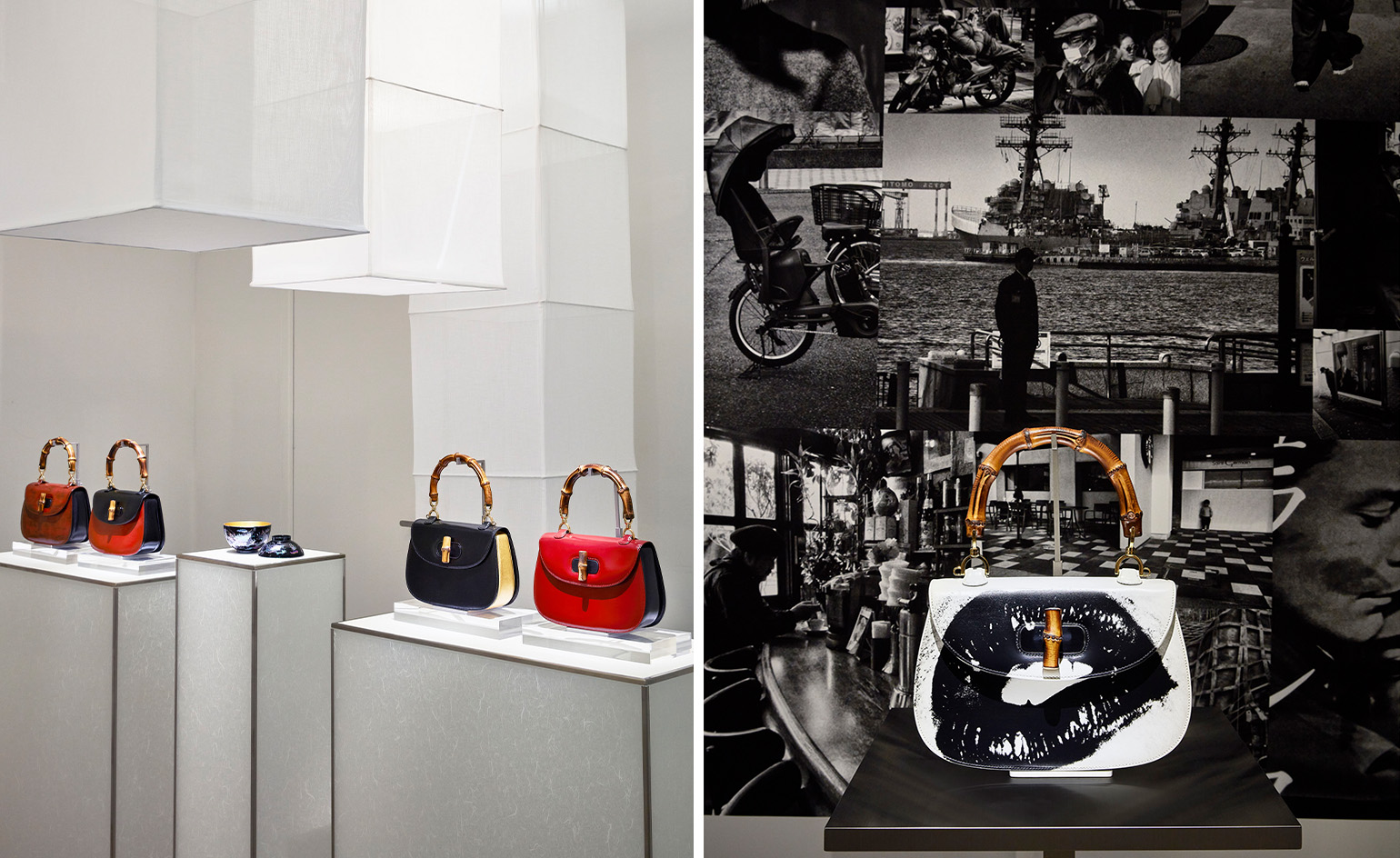
In 1964, Tokyo would host the Olympics, heralding a new era for the country and a re-introduction to the world stage. As the Bullet Train was completed and the sweeping lines of the Kenzō Tange-designed Yoyogi Stadium rose across the Tokyo skyline, Japan was cast as a country of peace and prosperity; a technologically-savvy nation recovered from the ravages of World War II. This optimistic mood would permeate the nation, luring an influx of international brands, as the games were beamed across the world via the first-ever use of satellite.
These included Gucci, the historic Italian luggage house which was seeing a renaissance of its own. Adopted by the burgeoning jet-set classes of the 1960s, its newly introduced double-G logo, Horsebit loafers and top-handle handbags became internationally recognised symbols of status and style. This was cemented in 1961 when Jacqueline Kennedy first carried what would be later renamed the ‘Jackie’ bag. Three years later, Gucci would arrive in Japan, a 60-year landmark the house celebrates this month with ‘Then and Now', an exhibition at the Gucci Ginza Gallery in Tokyo.
‘Then and Now’: Gucci celebrates 60 years in Japan
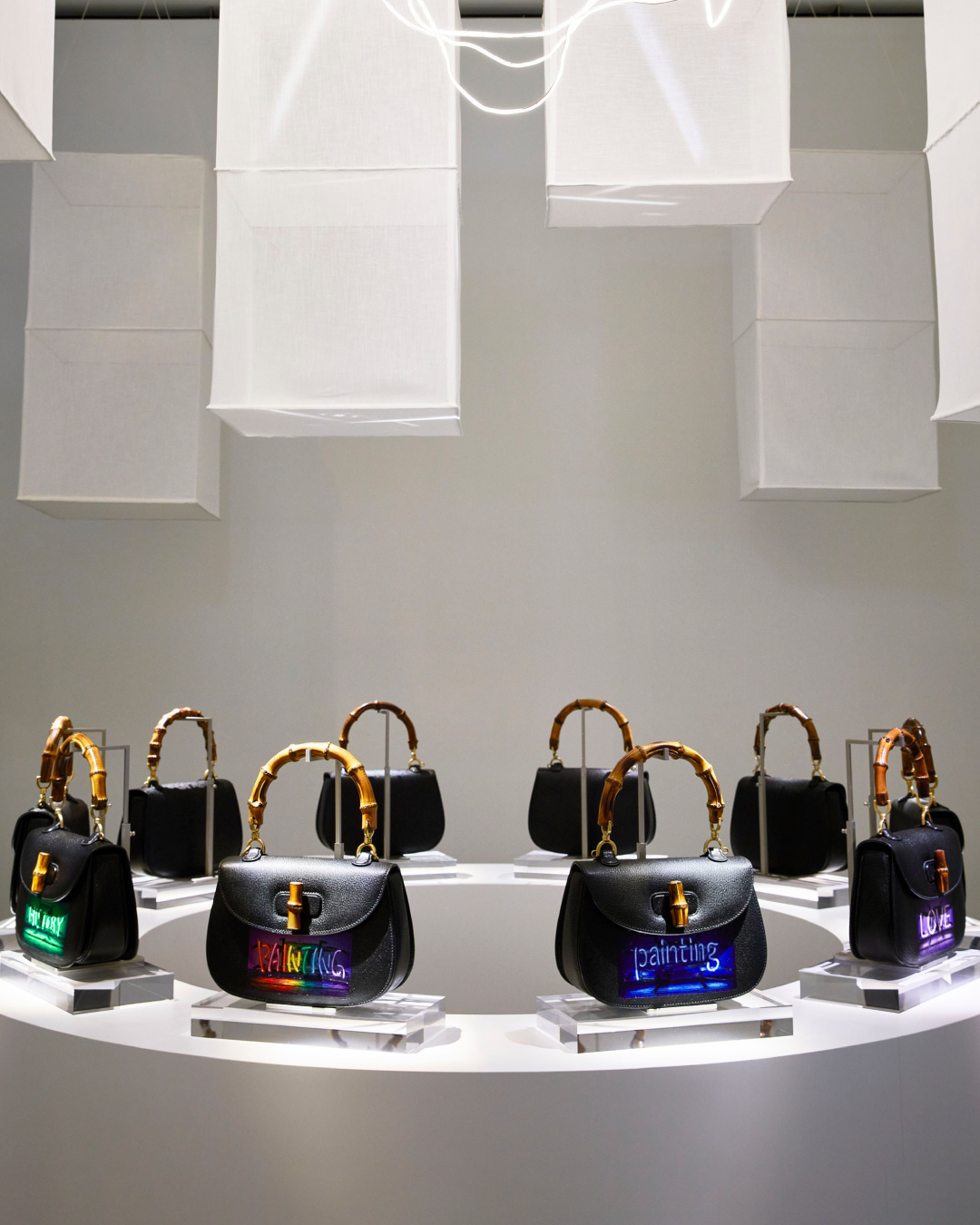
‘Then and Now’ features both designs by artists like painter Nami Yokoyama (above), alongside vintage Bamboo 1947 handbags from the Gucci archive
The focus here is on the house’s Bamboo 1947 handbag, recognisable for its curved bamboo handle, crafted in a meticulous process which sees the material – long synonymous with Japan – softened, manipulated and then lacquered into its unique curved shape. Launched in 1947 by house founder Guccio Gucci, the exhibition features 60 vintage Bamboo 1947 handbags from the house’s Florentine archive in a multitude of fabrics and finishes, primarily dating from the 1980s and 1990s.
In addition, a series of Japan-based artisans have reinterpreted the style using a range of craft techniques rooted in the country’s history. These include goldsmith Morihito Katsura (who has been awarded the status of ’Living National Treasure’ for his role in preserving Japanese ‘cultural artefacts’), his pupil Naoko Ai, lacquerer Ai Tokeshi, ceramist Nakazato Hirotsune, photographer Daido Moriyama and painters Yui Yaegashi and Nami Yokoyama.
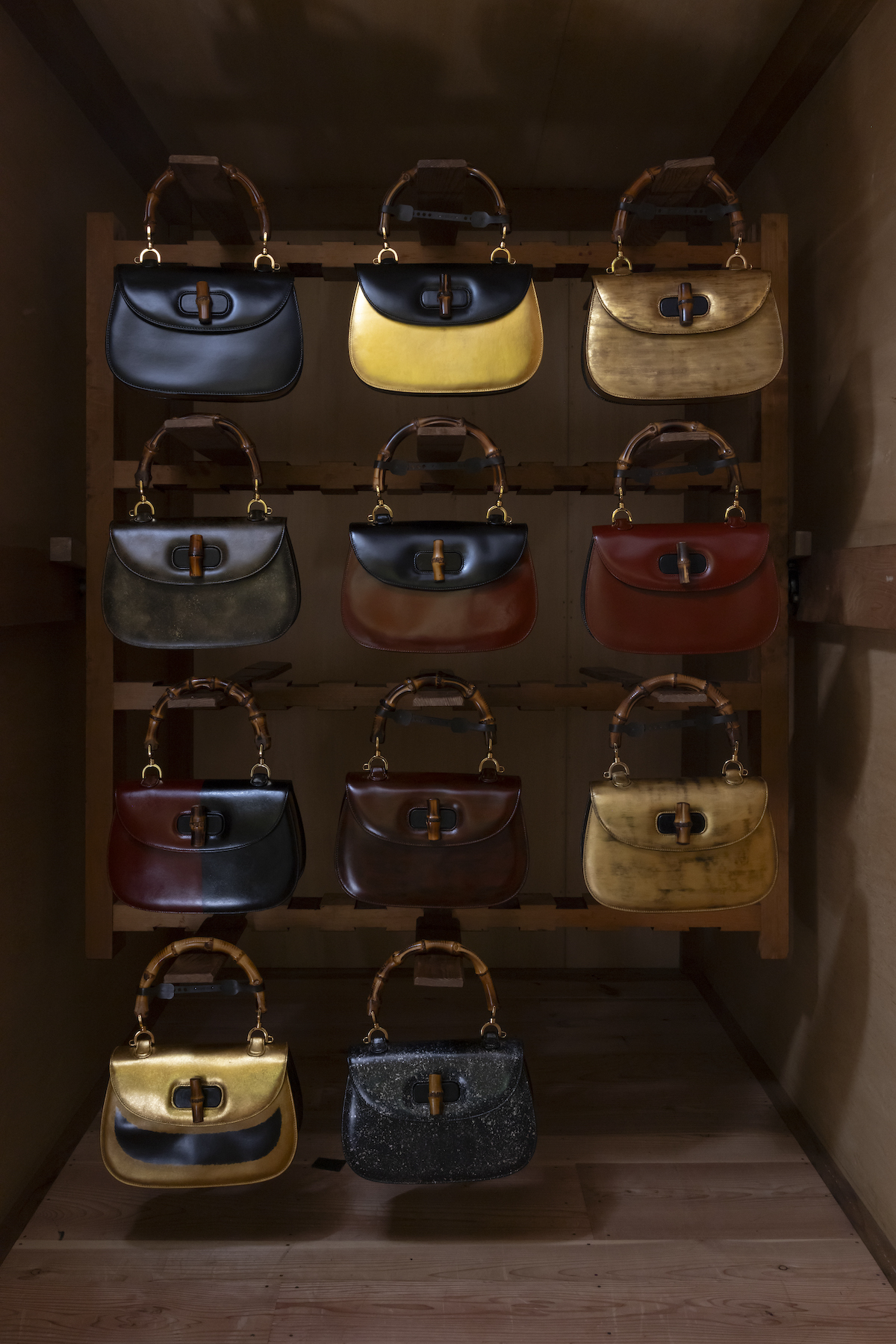
Lacquerer Ai Tokeshi’s added layers of lacquer to the Gucci Bamboo 1947’s leather body. Here, they are shown hanging in her studio
‘Craftsmanship reflects the climate, history, and culture of each province,’ Tokeshi tells Wallpaper*, speaking of the historical importance of craft in Japanese culture. The Okinawa-born artisan adds layers of lacquer – some with gold foiled finishes – to the body of the bag, which she calls ‘harmonious’. ‘By experiencing inherited techniques, we can feel the lives and spirituality of our predecessors and how they interacted with natural materials,’ she continues. ‘This leads to a renewed appreciation of the uniqueness, charm, and richness of the land.’
Elsewhere, Hirotsune, who is known for his Aritayaki porcelain (a style from the Koyorian in Arita, Saga Prefecture which dates back 400 years) recreates the bamboo handle in porcelain. ‘[I wanted to] express the flexibility and elasticity characteristic of bamboo in the Bamboo Bag using porcelain, [so] I shaped each piece by hand, ensuring a form with individuality,’ he says. ‘The aim was to express the hardness and sharpness unique to porcelain, and the translucent whiteness that can only be achieved with the Amakusa pottery stone.’
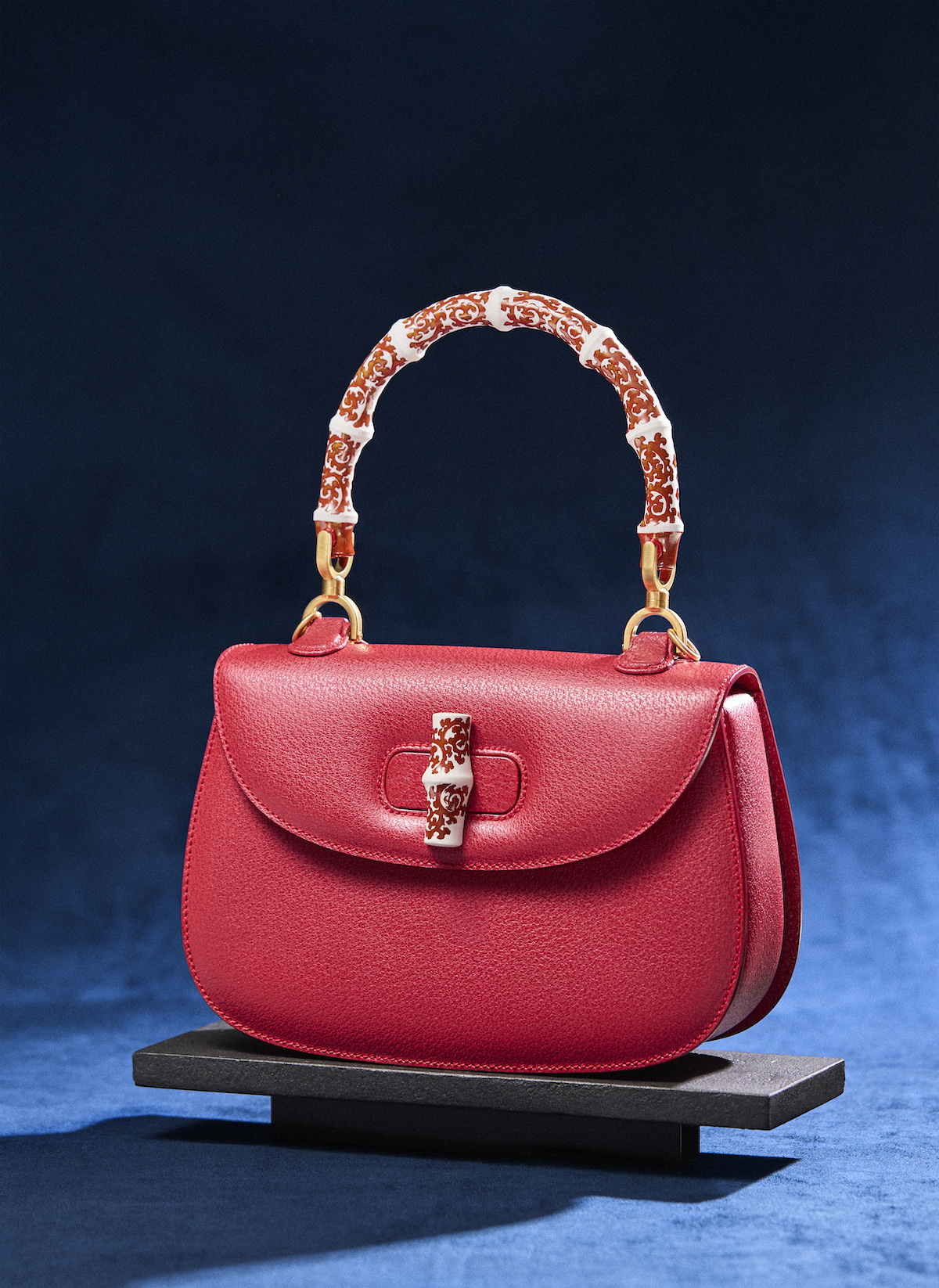
Ceramicist Nakazato Hirotsune’s take on the Gucci Bamboo 1947 features a porcelain handle
‘Japanese crafts have value not only as tools for daily life, embodying “the beauty of utility”, but also as artistic crafts characterised by the delicate handwork unique to Japanese artisans,’ he says. ‘Although the standard of beauty and necessity changes over time, I believe it is important to create for both a new era, while also preserving traditional values and techniques. Crafts convey and perpetuate the climate of Japan.’
Receive our daily digest of inspiration, escapism and design stories from around the world direct to your inbox.
‘Bamboo 1947: Then and Now Celebrating 60 years of Gucci in Japan’ runs at Gucci Ginza Gallery, Tokyo until September 23, 2024.
Jack Moss is the Fashion & Beauty Features Director at Wallpaper*, having joined the team in 2022 as Fashion Features Editor. Previously the digital features editor at AnOther and digital editor at 10 Magazine, he has also contributed to numerous international publications and featured in ‘Dazed: 32 Years Confused: The Covers’, published by Rizzoli. He is particularly interested in the moments when fashion intersects with other creative disciplines – notably art and design – as well as championing a new generation of international talent and reporting from international fashion weeks. Across his career, he has interviewed the fashion industry’s leading figures, including Rick Owens, Pieter Mulier, Jonathan Anderson, Grace Wales Bonner, Christian Lacroix, Kate Moss and Manolo Blahnik.
-
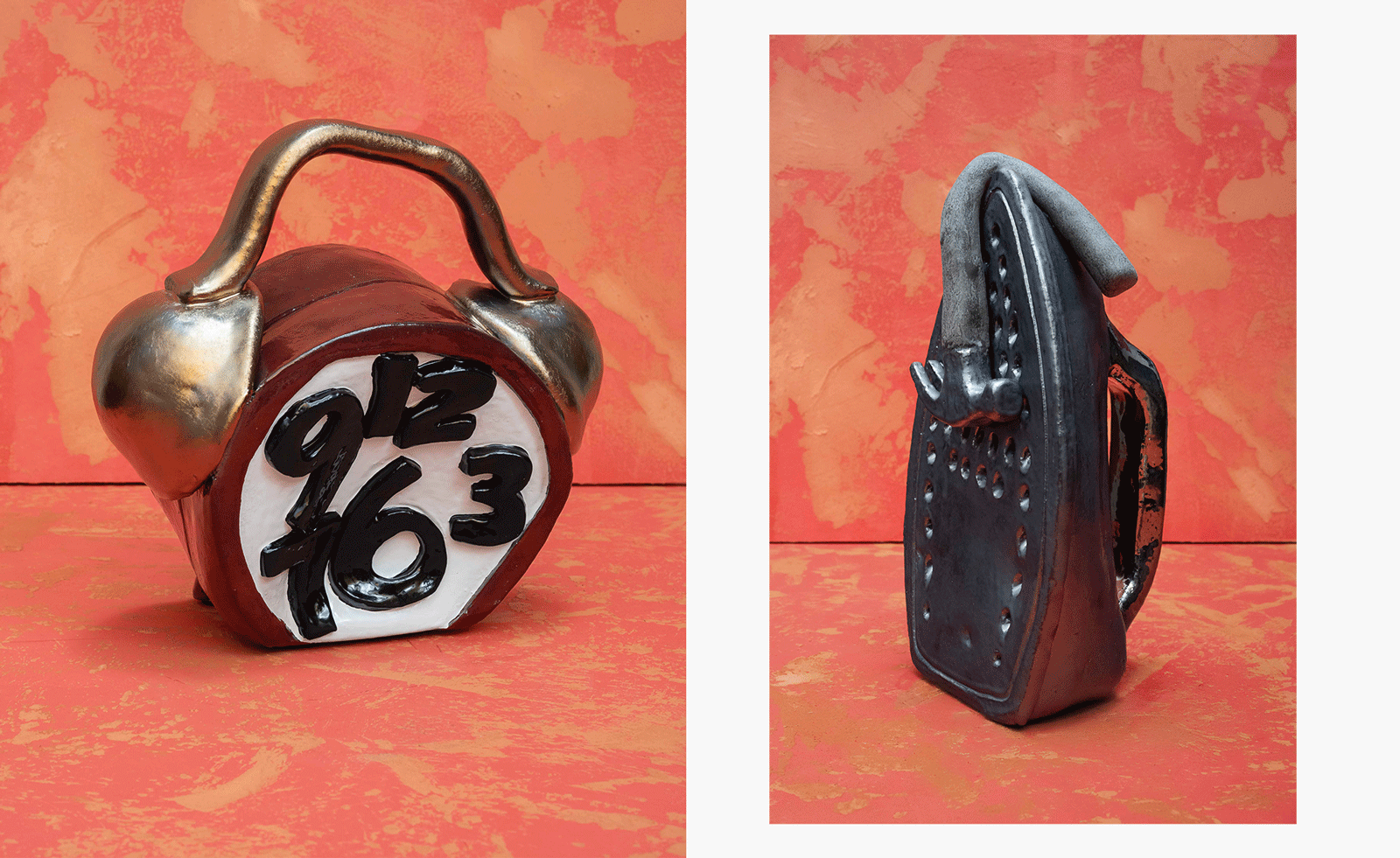 Sculptor Woody De Othello paints a Miami museum red for a show that ‘almost hugs you’
Sculptor Woody De Othello paints a Miami museum red for a show that ‘almost hugs you’The Miami-born, California-based artist opens his first museum exhibition in his hometown as an experiential journey through life and lifeless objects
-
 Alpine A390 GT: French, fast and fun. A sporting EV with a real sense of occasion
Alpine A390 GT: French, fast and fun. A sporting EV with a real sense of occasionAlpine doubles down on its fast electric credentials with the A390 GT, the French performance brand’s largest car to date
-
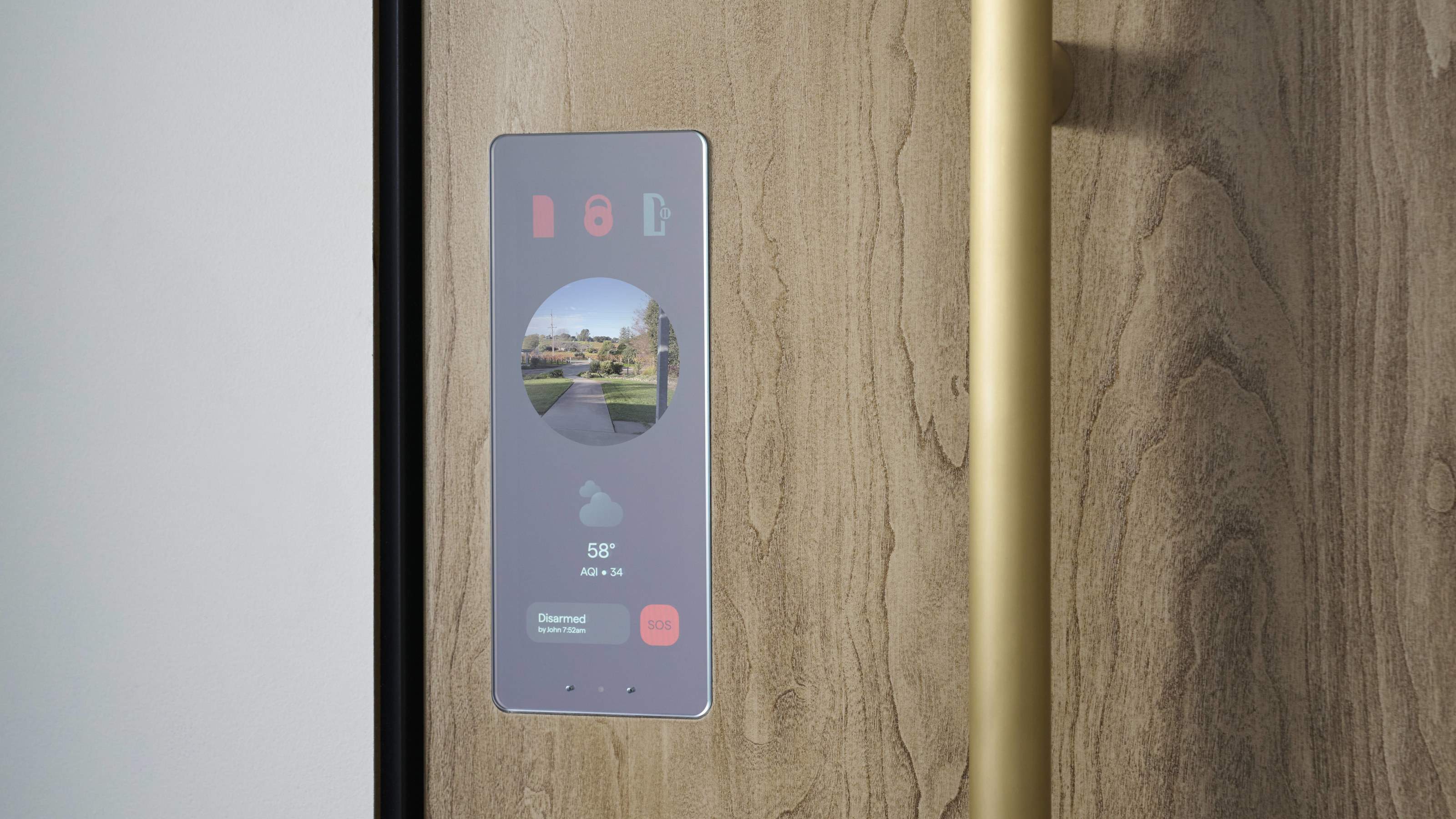 Forget smart homes, Doma's 'intelligent' doors open at the sight of a familiar face
Forget smart homes, Doma's 'intelligent' doors open at the sight of a familiar faceYves Béhar and Jason Johnson have founded Doma, a tech start-up dedicated to seamlessly integrating tech into your daily life
-
 Giant cats, Madonna wigs, pints of Guinness: seven objects that tell the story of fashion in 2024
Giant cats, Madonna wigs, pints of Guinness: seven objects that tell the story of fashion in 2024These objects tell an unconventional story of style in 2024, a year when the ephemera that populated designers’ universes was as intriguing as the collections themselves
-
 ‘It feels like something out of a movie’: Studio I-IN designs the Tokyo office for Japanese haircare brand Kinujo
‘It feels like something out of a movie’: Studio I-IN designs the Tokyo office for Japanese haircare brand KinujoStudio I-IN’s design for the head office of Tokyo-based haircare brand Kinujo includes a striking hemispheric desk, a fluted marble wall and porous natural lighting
-
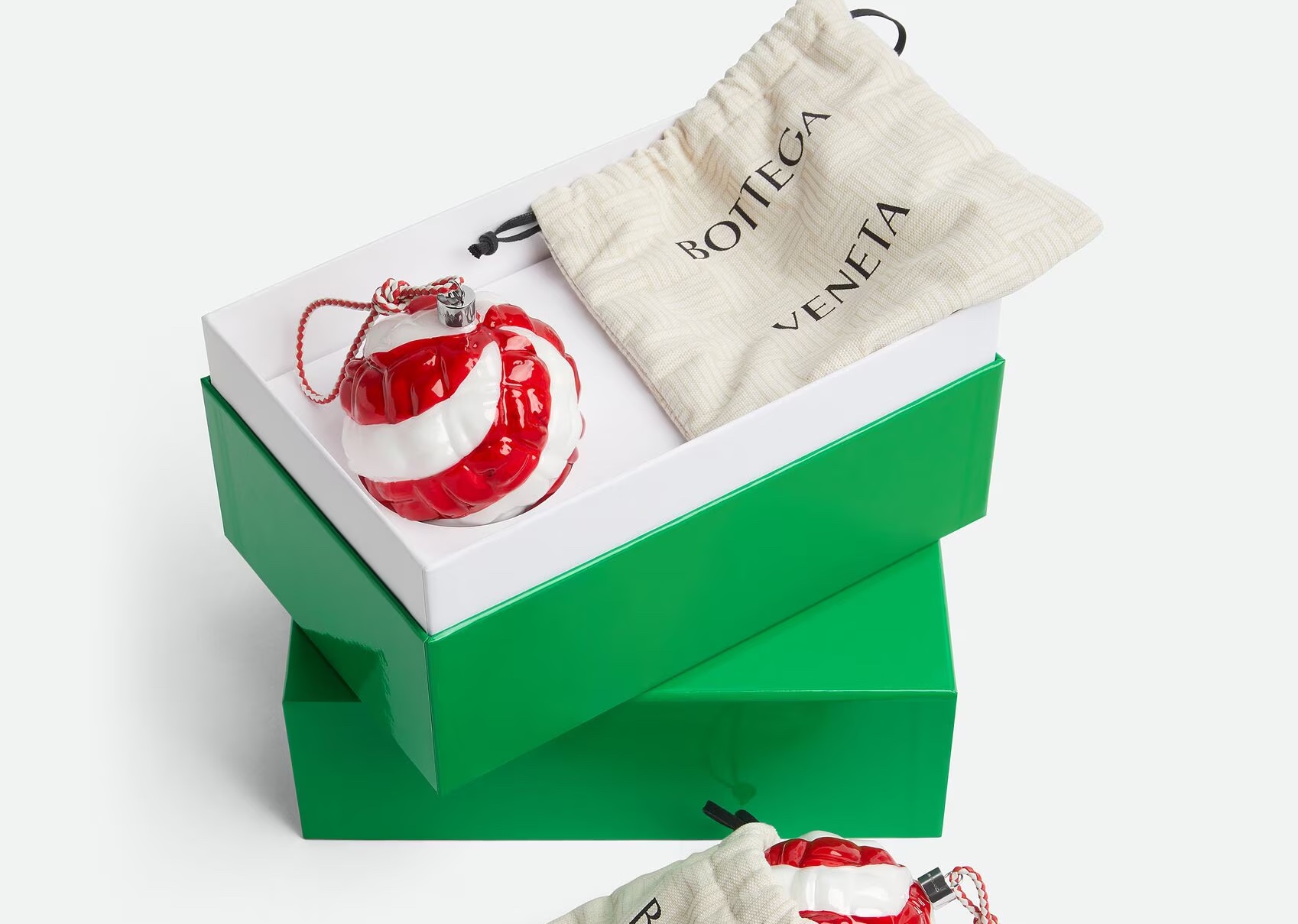 Fashionable Christmas baubles to accessorise this year’s tree, from Bottega Veneta to Loewe
Fashionable Christmas baubles to accessorise this year’s tree, from Bottega Veneta to LoeweSelected by the Wallpaper* style team, a gleaming array of Christmas baubles for fashion fans featuring fantastical designs from Bottega Veneta, Loewe, Prada and more
-
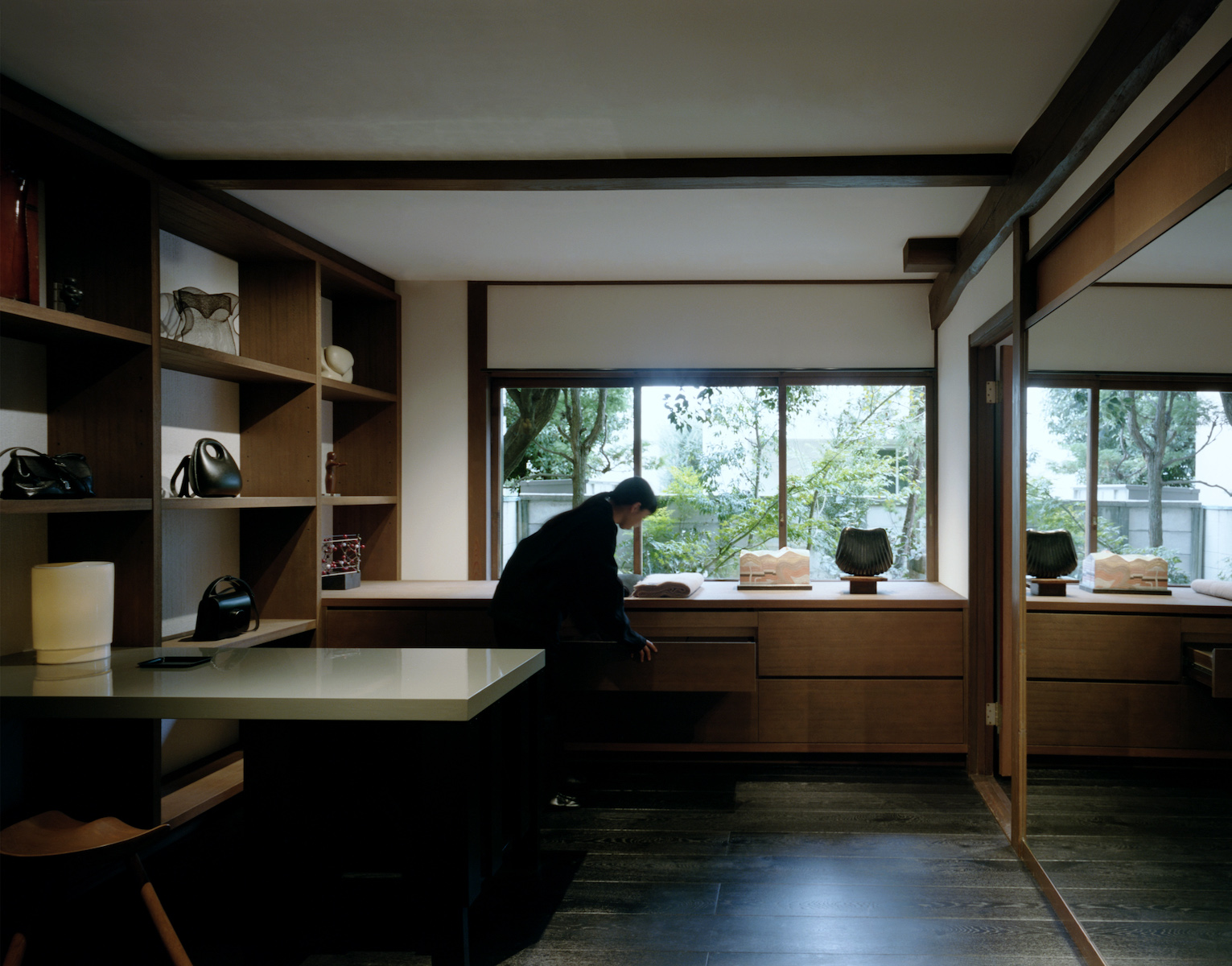 Tranquil and secluded, Lemaire’s new Tokyo flagship exudes a sense of home
Tranquil and secluded, Lemaire’s new Tokyo flagship exudes a sense of homeIn Tokyo’s Ebisu neighbourhood, Lemaire’s tranquil new store sees the French brand take over a former 1960s home. Co-artistic directors Christophe Lemaire and Sarah-Linh Tran tell Wallpaper* more
-
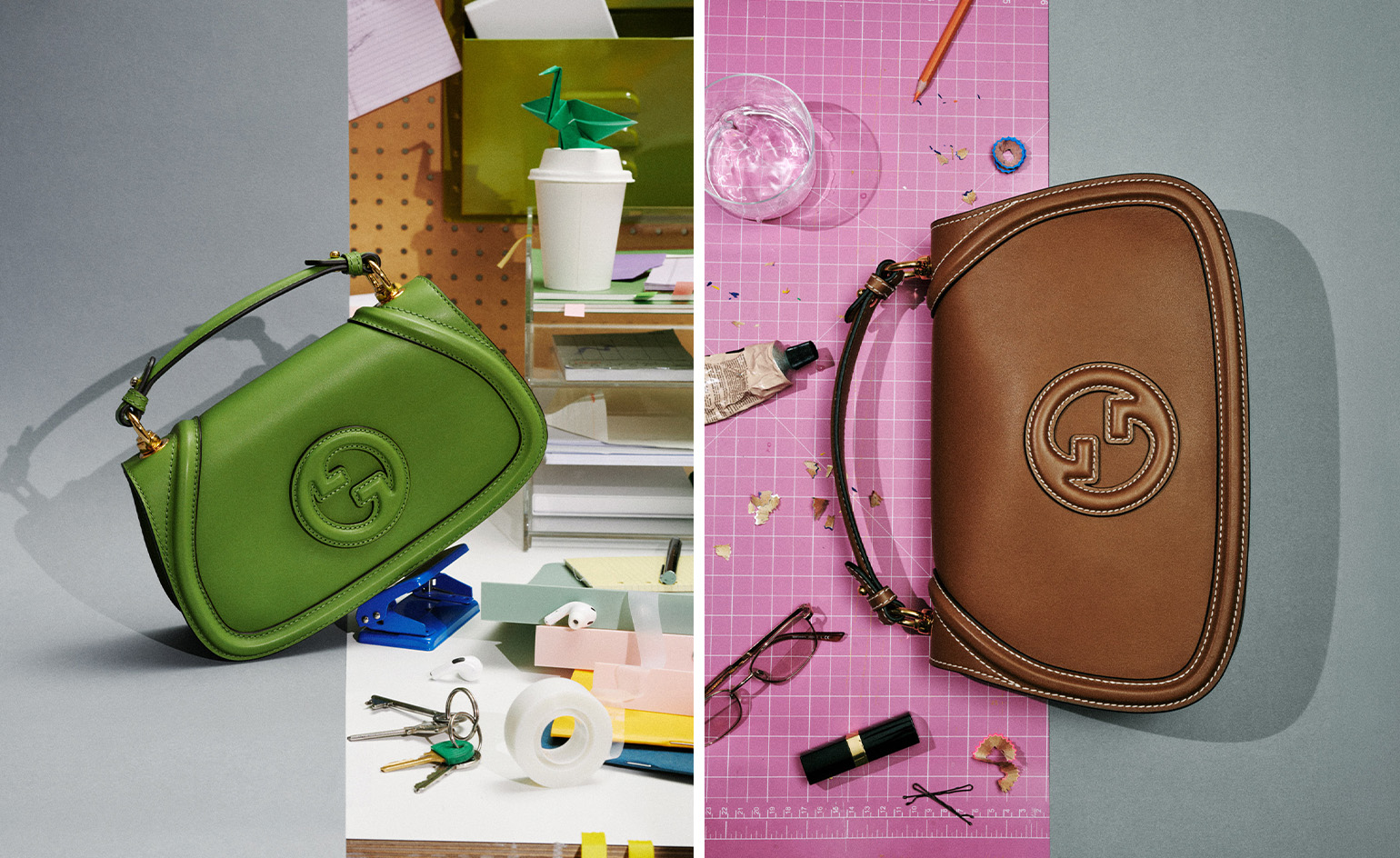 Gucci’s ‘Blondie’ bag revival sees the enduring 1970s accessory reimagined anew
Gucci’s ‘Blondie’ bag revival sees the enduring 1970s accessory reimagined anewFirst shown at Sabato De Sarno’s Gucci Cruise 2025 show in London, a new iteration of Gucci’s beloved ‘Blondie’ bag fuses 1970s insouciance with a crisp modernity
-
 Discothèque perfumes evoke the scent of Tokyo in the year 2000
Discothèque perfumes evoke the scent of Tokyo in the year 2000As Discothèque gets ready to launch its first perfume collection, Mary Cleary catches up with the brand’s founders
-
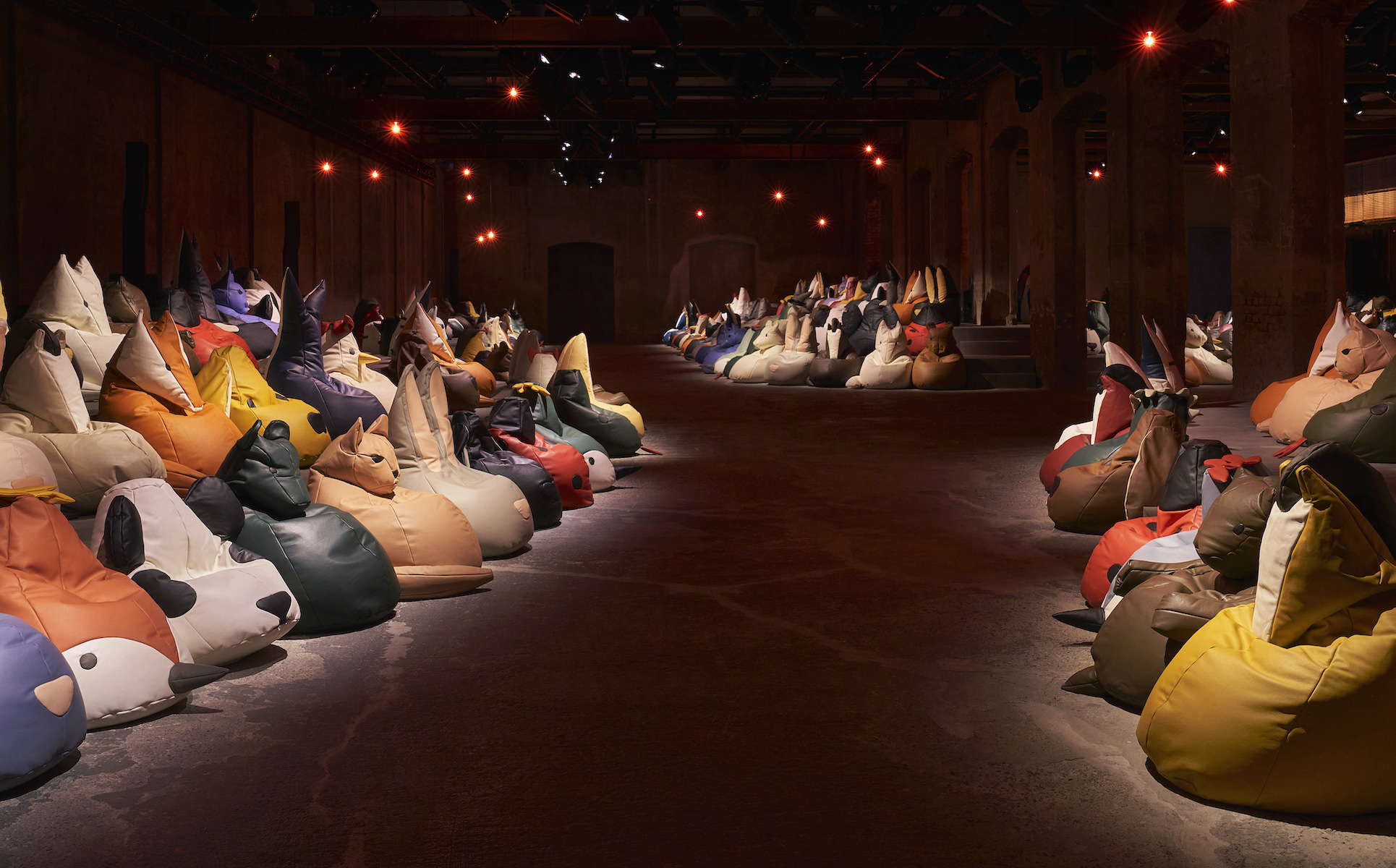 The breathtaking runway sets of S/S 2025, from beanbag animals to a twisted living room
The breathtaking runway sets of S/S 2025, from beanbag animals to a twisted living roomWallpaper* picks the best runway sets and show spaces of fashion month, which featured Bottega Veneta’s beanbag menagerie, opulence at Saint Laurent, and artist collaborations at Acne Studios and Burberry
-
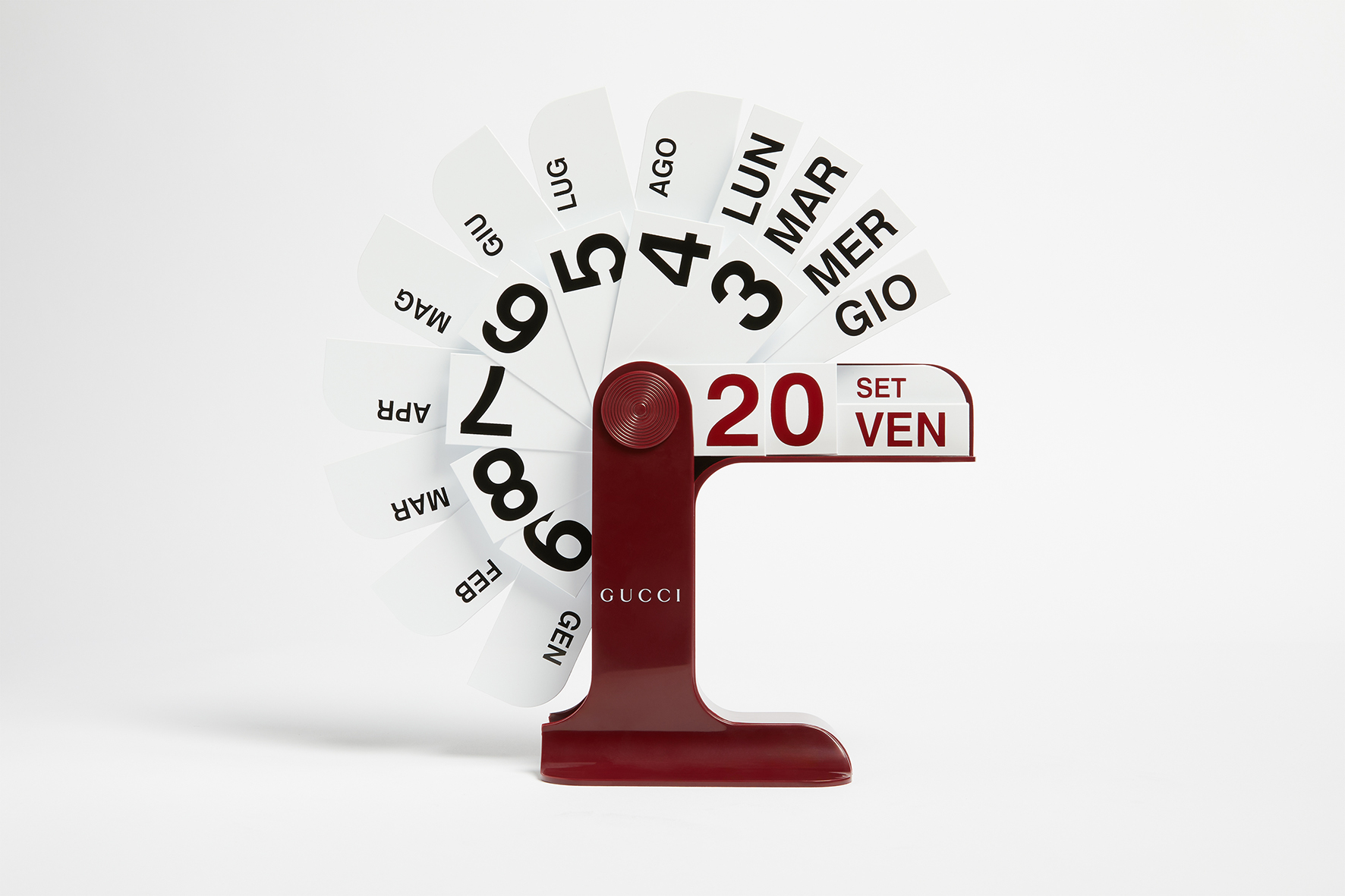 The invitation for Gucci’s latest show was a reissued Enzo Mari design classic
The invitation for Gucci’s latest show was a reissued Enzo Mari design classicMilan Fashion Week’s best invitation came from Gucci – a reissue of Enzo Mari’s ‘Timor’ perpetual calendar in the Italian house’s signature ‘Ancora’ oxblood red